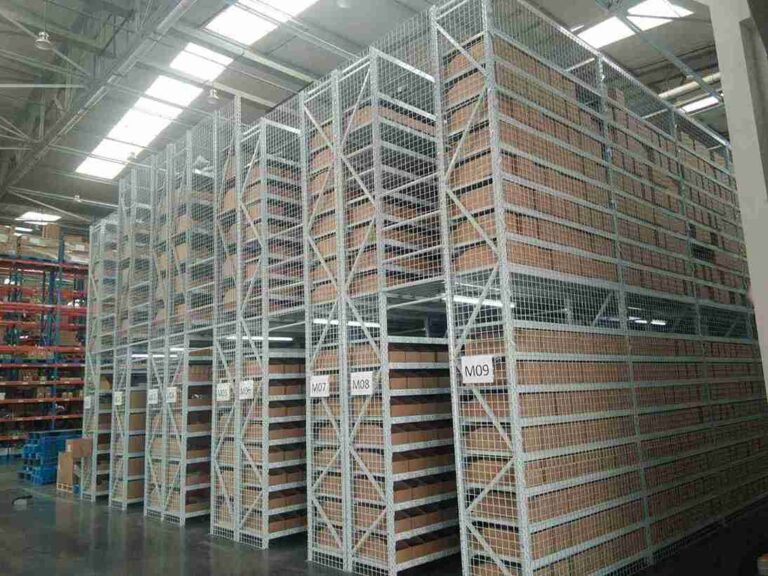📐 "First 50 Enterprise Queries Get Custom 3D Warehouse Design" Plan

Introduction: Why Fire Safety in Narrow Aisle Warehouses Demands Special Attention
fire safety narrow aisle warehouse,Narrow aisle warehouses are designed to maximize storage efficiency, but their compact layouts introduce unique fire safety challenges. With aisles often less than 10 feet wide, these facilities face higher risks of rapid fire spread, restricted emergency access, and increased smoke accumulation. A single fire incident can lead to catastrophic inventory loss, structural damage, and even worker injuries—making fire safety in narrow aisle warehouses a top priority for facility managers.
This in-depth guide provides actionable strategies to enhance fire safety in narrow aisle warehouses, covering:
- Critical fire hazards specific to high-density storage environments
- Prevention best practices to minimize ignition risks
- Advanced suppression systems designed for confined spaces
- OSHA & NFPA compliance requirements for warehouse fire safety
- Employee training protocols to ensure rapid emergency response
By implementing these measures, businesses can significantly reduce fire risks while maintaining operational efficiency in their narrow aisle warehouses.

1. Understanding Fire Risks in Narrow Aisle Warehouses
1.1 Why Narrow Aisle Warehouses Are More Prone to Fires
Unlike conventional warehouses, narrow aisle warehouses present heightened fire risks due to:
- Limited ventilation – Smoke and heat build up quickly, reducing visibility and escape time.
- High-density racking – Flames spread rapidly vertically (chimney effect) and horizontally.
- Obstructed emergency access – Firefighters struggle to navigate tight spaces.
- Forklift operations – Electrical faults, fuel leaks, or battery malfunctions can ignite fires.
1.2 Most Common Causes of Warehouse Fires
Statistics show that fire safety in narrow aisle warehouses is often compromised by:
✅ Electrical failures (faulty wiring, overloaded circuits, forklift charging stations)
✅ Improper storage (flammable liquids near heat sources, blocked sprinklers)
✅ Human error (smoking near inventory, mishandling equipment)
✅ Spontaneous combustion (oily rags, improperly stored chemicals)
1.3 How Fires Spread in High-Density Storage
- Vertical spread – Flames climb pallets and racks like a chimney.
- Horizontal spread – Narrow aisles allow fire to jump between racks without firebreaks.
- Smoke obstruction – Thick smoke hampers evacuation and firefighting efforts.
2. Fire Prevention Strategies for Narrow Aisle Warehouses
2.1 Proper Storage & Housekeeping Best Practices
To enhance fire safety in narrow aisle warehouses, facility managers must enforce:
✔ NFPA 230 compliance – Maintain proper clearance between pallets (minimum 6 inches from sprinklers).
✔ Flammable material segregation – Store chemicals, oils, and aerosols in designated fire-rated cabinets.
✔ Debris control – Regularly remove cardboard, plastic wrap, and other combustible waste.
✔ No-smoking policies – Enforce strict bans near storage zones.
2.2 Electrical & Equipment Safety Measures
Since electrical faults are a leading cause of warehouse fires:
🔌 Monthly wiring inspections – Check for frayed cables and overloaded circuits.
🔌 Explosion-proof lighting – Required in areas with flammable vapors.
🔌 Forklift battery safety – Designate charging stations away from storage racks.
2.3 Fire-Resistant Racking & Structural Protections
- UL-listed fire-rated racking – Slows flame spread.
- Fire barriers between aisles – Prevents horizontal fire movement.
- Smoke vents & mechanical exhaust systems – Improves ventilation.
3. Essential Fire Suppression Systems for Narrow Aisle Warehouses
3.1 Automatic Sprinkler Systems: The First Line of Defense
- ESFR (Early Suppression, Fast Response) sprinklers – Ideal for high-stack storage.
- In-rack sprinklers – Provide targeted protection within aisles.
3.2 Advanced Fire Detection Technologies
- Air-sampling smoke detectors – Detect fires before flames appear.
- Thermal imaging cameras – Monitor hotspots in hard-to-reach areas.
3.3 Specialized Suppression for High-Risk Zones
- Foam suppression – For flammable liquid storage.
- Clean agent systems (FM-200, Novec 1230) – Protect sensitive electronics.
4. OSHA & NFPA Compliance for Warehouse Fire Safety
4.1 Key OSHA Standards for Narrow Aisle Warehouses
- 29 CFR 1910.38 – Requires written emergency action plans.
- 29 CFR 1910.157 – Mandates portable fire extinguishers every 75 feet.
- 29 CFR 1910.178 – Enforces forklift safety near flammable materials.
4.2 NFPA Codes Every Warehouse Must Follow
- NFPA 13 – Standards for sprinkler system design.
- NFPA 101 – Life Safety Code for evacuation routes.
- NFPA 30 – Regulations for flammable liquid storage.
5. Employee Training & Emergency Preparedness
5.1 Fire Safety Training Programs
- Quarterly fire drills – Practice evacuation through narrow aisles.
- Forklift operator certifications – Reduce ignition risks.
5.2 Emergency Response Planning
- Clearly marked exit routes – Ensure visibility in smoke-filled conditions.
- Designated assembly points – Located a safe distance from the building.
Conclusion: Protecting Your Narrow Aisle Warehouse from Fire Disasters
Fire safety in narrow aisle warehouses requires proactive measures—from prevention protocols to advanced suppression systems. By adhering to OSHA and NFPA standards, conducting regular inspections, and training employees, businesses can minimize fire risks and protect their assets.
Investing in fire safety today prevents costly disasters tomorrow.
FAQs: Fire Safety in Narrow Aisle Warehouses
1. How often should sprinkler systems be tested in narrow aisle warehouses?
✔ Weekly inspections for obstructions + annual NFPA 25 compliance tests.
2. What’s the best fire extinguisher for narrow aisle warehouses?
✔ Class ABC extinguishers (combats electrical, liquid, and common combustible fires).
3. Can hazardous chemicals be stored in narrow aisles?
✔ Yes, but only in fire-rated cabinets with proper ventilation (per NFPA 30).
4. How can ventilation be improved in narrow aisle warehouses?
✔ Mechanical smoke exhaust systems + ceiling vents to prevent smoke buildup.
5. Are narrow aisle warehouses more likely to experience fires?
✔ Yes, due to high-density storage, but risks can be significantly reduced with proper fire safety measures.




